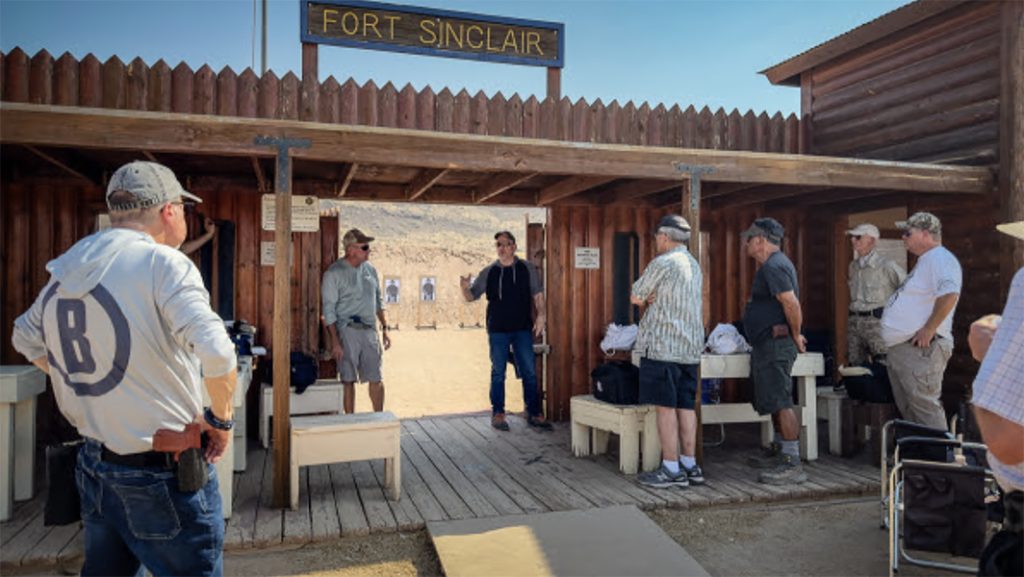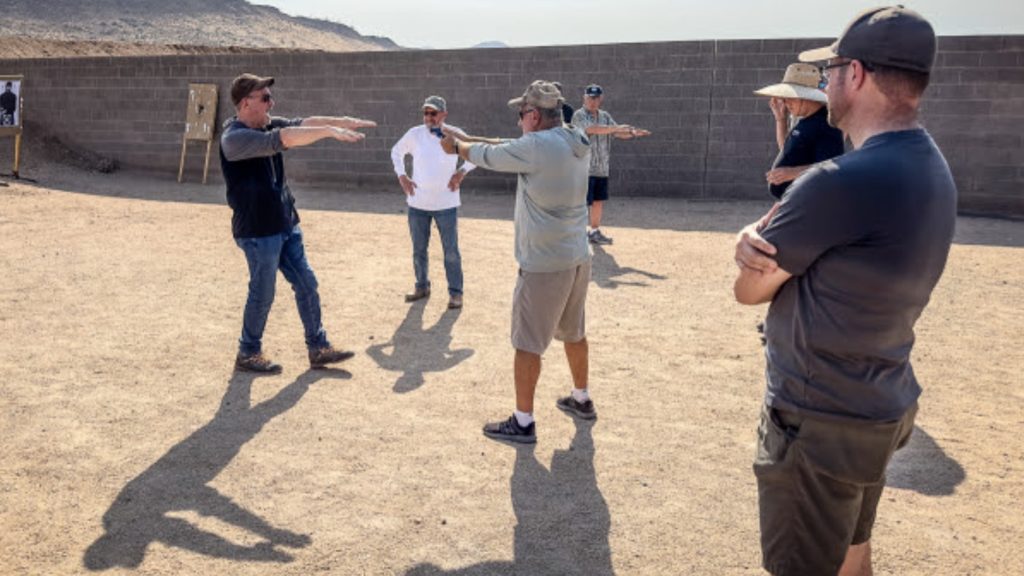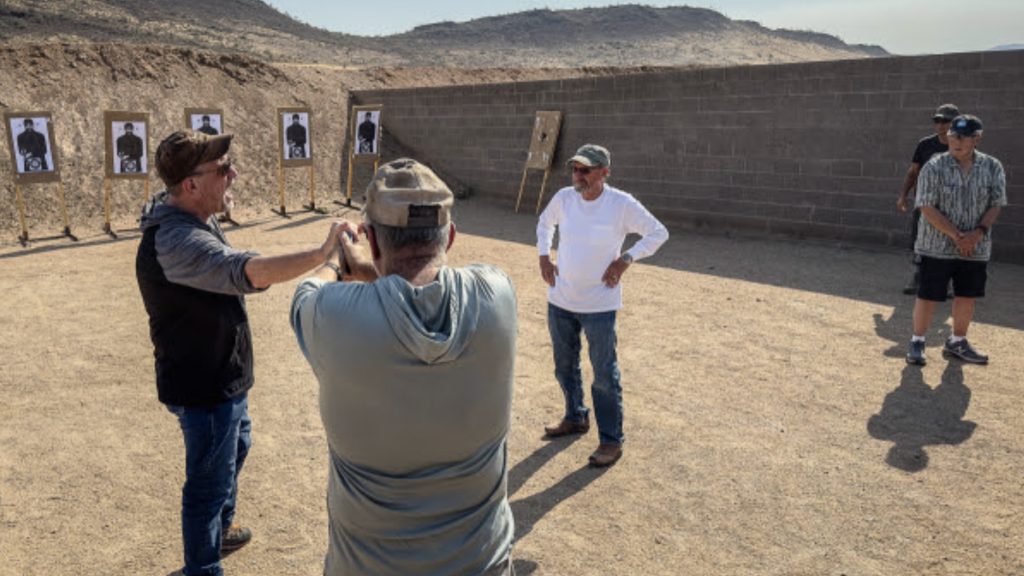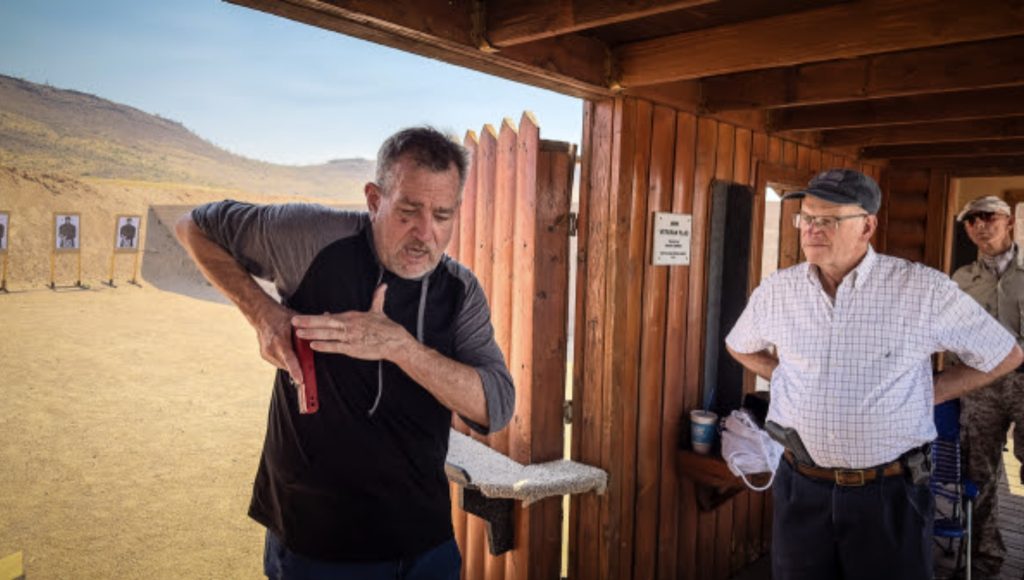
Something I learned today
Black and white is always gray
— from Hüsker Dü’s album Zen Arcade
Never pass up the opportunity to drop a Hüsker Dü reference. That’s one of my hard and fast rules. Another hard and fast rule I subscribe to is that the higher the number of rounds shot in a shooting class, the better the class. I can remember somebody telling me once that “you will shoot 1,200 to 1,500 in so-and-so’s two-day class.” I immediately thought, ‘That’s the kind of class where you’re getting your money’s worth.’
As it turns out, that’s not actually true. Something I learned today is that shooting no rounds at all can be more valuable than you’d imagine.
That may be hard to wrap your brain around, and I wouldn’t have bought that ‘line of crap’ if it weren’t for the fact that, A) I’m older now and a lot more open-minded about such concepts and, B) I took part in a two-hour class where we didn’t shoot a single round…but learned a ton.
A couple weeks ago – OK, so it wasn’t today, but that’s when I learned something – I, along with my friend Yamil Sued, took part in a two-hour range session hosted by Freddie Blish that featured local instructor Cecil Burch from from Immediate Action Combatives.
This ‘mini class’ was just a small taste of a longer full-day class Cecil teaches. In it he touched on maintaining the spatial relationship, functional footwork, presenting the pistol through an appropriate line of extension and compression, and retention shooting. And we didn’t do any actual shooting.
All our range work was done using inert red guns. That’s because we were working in teams of two where we’d be drawing and pointing the red gun at our partner as they advanced on us. I don’t know about you, but if I’m going to do this sort of drill, I’d prefer to do it with a piece of plastic rather than a…well, you get it.


Afterwards, as we sought some shade and a slight reprieve from the Arizona sun on what was a 100 degree morning, Cecil broke down the components of the drill and explained why we wouldn’t simply draw and blast at the first sign of a potential aggressor breaking the 21 foot barrier.
Not every encounter will play out the way you train and drill in a shooting class. Sometimes an encounter can begin within striking distance. How you react, move, avoid, retain your firearm, and ultimately shoot may not happen like it does on the range.
Cecil really got the class interested when he discussed the last two subjects he covered — firearm retention and shooting. Cecil is an accomplished jiu-jitsu competitor and instructor. Combat up close and personal is where he lives, and he had our undivided attention as he explained the concepts and backed them up with data and facts.
A lot of instructors can tell you things and there are certainly those who love the sound of their own voice so much that they’re sure you’ll love it just as much. The good instructors, however, know how to educate you. Cecil is one of those. Looking around the group we were dialed in to what he was teaching, with two gentlemen diligently taking notes.
I wasn’t one of those notetakers, which probably tells you something about how smart I am.

Cecil wrapped up the class explaining these two hours were less than a quarter of what is covered in his full day class. I can’t speak for everyone on the range that morning but as for me and Yamil we both agreed that his daylong class, which ballparks around $175, would be money really well spent. And that’s without knowing how many rounds we’d actually end up shooting in the full class.
The moral of the story: don’t let round count fool you into thinking the more you shoot the better the class is. When speaking recently with George Harris, well-known, long-time, and highly respected instructor, he reminded me that with a high round count comes fatigue, and with fatigue comes the accentuation and reinforcement of bad habits.
I kinda wish he’d pulled me aside several years ago when I was working with him at SIG SAUER and explained that to me. He would have saved me several years of stupid assumptions. That, too, is something I learned today.
I’m looking forward to the opportunity to attend a formal class with Cecil and learn a lot more while hopefully discrediting more of my foolish assumptions.


bookmarked!!, I like your web site!
Thanks a lot for sharing this with all of us you really know what you are talking approximately!
Bookmarked. Please additionally seek advice from my web site =).
We will have a hyperlink exchange contract among us